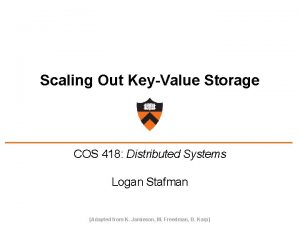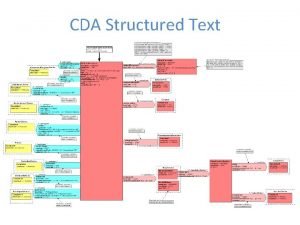Sloppy Management for Structured P 2 P services






- Slides: 6

Sloppy Management for Structured P 2 P services Paolo Costa VU University Amsterdam Guillaume Pierre VU University Amsterdam Alexander Reinefeld ZIB Berlin Thorsten Schütt ZIB Berlin Maarten van Steen VU University Amsterdam 1

Programming P 2 P overlays is much harder than it looks Take Chord for example – The routing algorithm itself couldn't be any simpler – 99% of complexity comes from overlay maintenance (build and maintain finger tables and successor lists, deal with failures, etc. ) Complexity means: – Additional work (ad-hoc algorithms) – Also, complex liveness bugs [NSDI 2007] Can't we make management a bit more systematic? 2

Position: Repair Algorithms Are Evil Repair algorithm: while (true) { detect_problem(); do_something_about_it(); /* Be careful about concurrent repairs, inaccurate problem detection, etc. */ } Sloppy Algorithm: specify_desired_invariant(); while (true) { do_nothing_about_problems(); /* Trust that problems will be taken care of background */ } in the 3

Example: build and maintain Chord finger tables Let's redesign Chord's finger table maintenance using a 2 -layer epidemic algorithm – One layer maintains random links between nodes (good for connectivity) – One layer selects links based on a criterion (here: which finger are you looking for? ) – Epidemic protocols run periodically regardless of any event in the overlay Good properties: – Very fast convergence – No need to do anything about (partial) failures – Constant background management traffic Do not worry about the algorithm's sloppiness! – There will be temporary overlay inconsistencies – But no more than using repair algorithms 4

Research agenda Let's explore if we can generalize the approach to other forms of overlay management – Load balancing before load problems occur – Enforce uniform distribution of overlay in-degree • Try to defeat Eclipse attacks. . . – Long-term management of Grid jobs • Continuously try to identify performance bottlenecks (machine selection, I/O, network capacity, etc. ) • Migrate processes to “better” nodes when possible • The optimization process should be transparent to the job! Each job is different, no need to change anything 5

Questions? 6









